Results 21 to 27 of 27
Thread: English Hone ID
-
03-14-2015, 04:40 PM #21Member

- Join Date
- Aug 2014
- Location
- iceland
- Posts
- 92
Thanked: 38
Sometimes it happens, because the surface is not enough smooth. After 2 may be 3 sharpening times (if you sharp a razor with light pressure + without slurry) the surface will became more smooth and it'll cut not so angry.
About grit range... it depends from concrete stone and actual properties may vary.
Without slurry and with smooth surface mine example works as a razor finisher.. app. 8-10RGrit range or little bit higher.
The plus of this stone is it's softness, but at the same time - without auto slurry. Because of that it may be flatten very fast (softness)+ can be used as a finisher (no auto slurry).
Some of this stones (for me - they looks the same):
A Super RARE Natural 7 1 4 034 Dalmore Blue Hone Stone for Razors to Ect | eBay
Natural Honing Stone | eBay
There were two more of them but i've lost links ,(
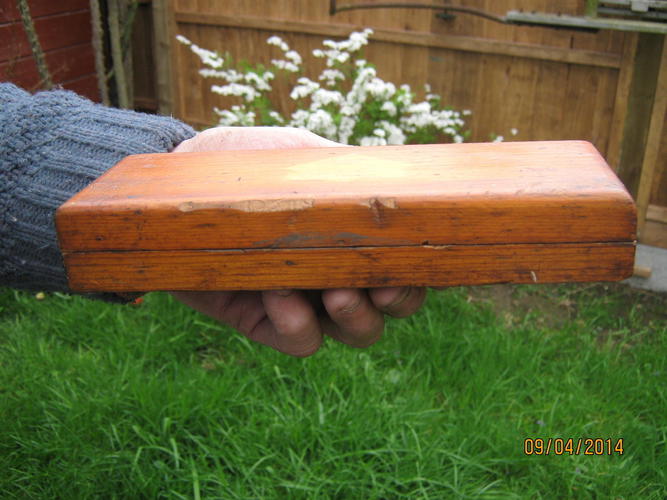
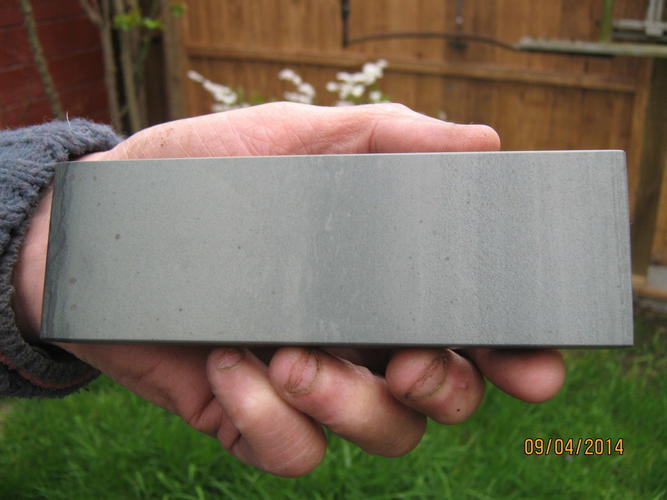
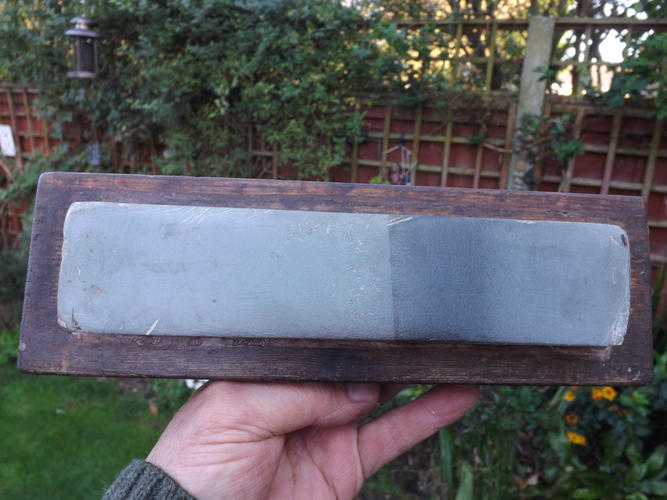
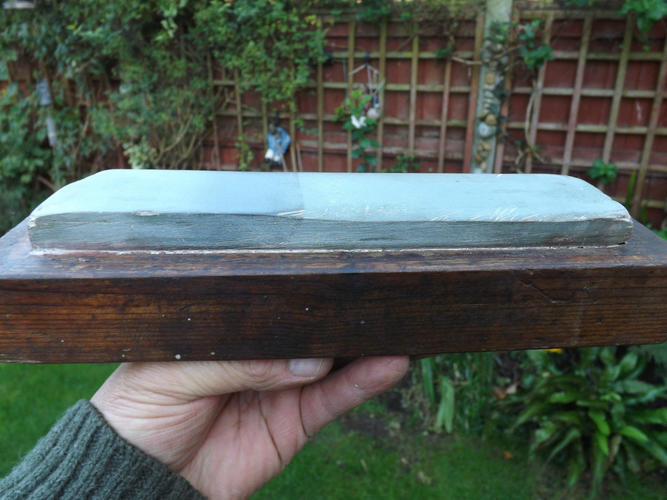
Last edited by Botanic; 03-14-2015 at 04:50 PM.
-
03-14-2015, 04:42 PM #22Senior Member



- Join Date
- Apr 2008
- Location
- Essex, UK
- Posts
- 3,816
Thanked: 3164
There are good Welsh Oilstones and not so good Welsh Oilstones. The hard ones are from slaty layers that have undergone induration (great pressure) and which have been subjected to great heat - the greenstone layer in wales, where most types come from, is about a mile long, extending from ancient volcanic action. Some channels of greenstone lay side-by-side with this igneous layer, and the heat has altered them int crystalline rather than slaty rock.
This harder type is often prone to what is called conchoidal fractures (shallow shell-like flakes where it has been knocked or dropped or received an impat fro a point-source) and delamination, as in one of Sebastians pics. The soft types seldom, if ever exhibit this because they are not as crystaline in nature, being comparatively soft.
The hard types can leave a super-sharp edge, but it tends to be a bit rough on the face - too sharp, if you like. Oil certainly brings the best sharpness out, and if the edge is too keen some passes on a chrome-oxide paddle makes the edge a bit smoother. Some of the hard types contain coarse inclusions and are not too good to hone on.
Using a slurry stone to form a slurry on one of the harder types gives you a gritty feeling when honing, so I prefer not to slurry these types. I also find oil a little messy, so I use water with some dish detergent in it - but a very light oil gives the best results.
The softer ones can be worked with a slurry, finishing on clear water and they have a typically smoother cutting edge.
The grit range is hard to assess as they vary so much - you have to make an estimate of a known sample to be honest. I would rather go along with saying that some are finishers and some are pre-finishers.
In addition to this, some welsh hones are stratified with layers and intrusions of hornblende, a darker green rock of Mohs hardness 5 - 6. This tells us that 1) hornblende is sometimes softer than domestic glass and sometimes harder than glass, and 2) hornblende is not a 'distinct' mineral but varies in its composition, some types being composed of iron and magnesium and others of sodium and calcium. It also varies in colour - it can be a very dark green, brown or black according to its constituent parts.
Regards,
Neil
-
The Following User Says Thank You to Neil Miller For This Useful Post:
doorsch (03-14-2015)
-
03-14-2015, 04:50 PM #23

Thanks again all of you. I'll simply test the hone on some razors and see what it brings :-)
-
03-14-2015, 09:16 PM #24Senior Member

- Join Date
- Mar 2009
- Posts
- 1,211
Thanked: 202
Neil can you show closer picture of your hone in the paddle please?
-
03-15-2015, 11:15 AM #25Senior Member



- Join Date
- Apr 2008
- Location
- Essex, UK
- Posts
- 3,816
Thanked: 3164
No problem:
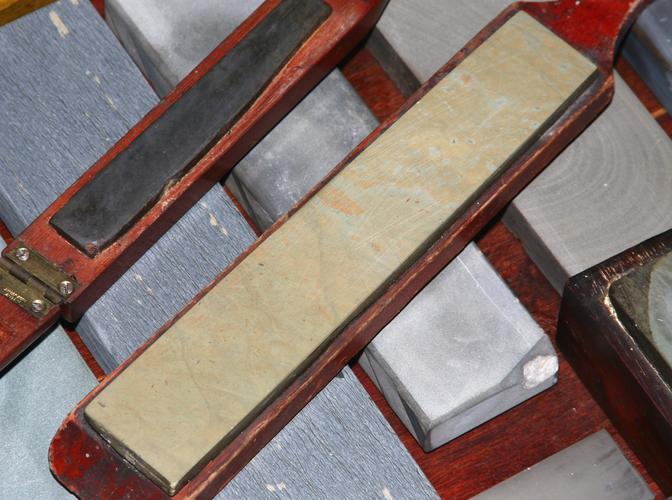
At first sight it appears to be some sort of Grecian Oilstone (same as LI, but patterned with swathes of darker dots) that has become discoloured.
However, after extensive lapping the orange/gold colours remain, and a closer look reveals an almost metallic sparkle to some of the orange areas. Also, it is very soft - almost as soft as some of the 1k synthetics, but the paddle gives an outstanding edge - with certain steels. It likes simple steels like old Sheffield blades are made from, does not like stainless and hates high carbon steels like TI make use of.
I must admit that as a honer, I also hate TI modern 'carbonsong' steel and much prefer steels around 60 rockwell, or the old (vintage, not the new rubbish) Puma, which is around 61.
Regards,
Neil
-
03-15-2015, 09:41 PM #26Senior Member

- Join Date
- Mar 2009
- Posts
- 1,211
Thanked: 202
Thank you Neil. I thought that i saw right. It look like stone from original Yellow Lake quarry. That is the real thing which has nothing to do with any slate sold under that name.
-
The Following User Says Thank You to adrspach For This Useful Post:
Neil Miller (03-16-2015)
-
03-16-2015, 08:27 PM #27Member

- Join Date
- Aug 2014
- Location
- iceland
- Posts
- 92
Thanked: 38
And one more Old Vintage Sharpening Stone Oil Stone | eBay
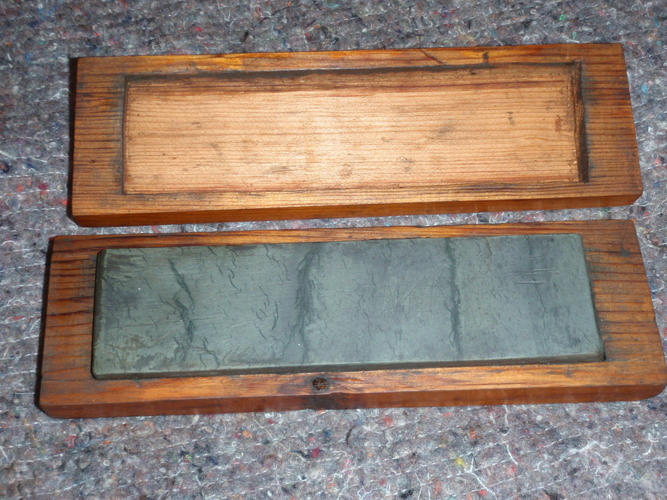


 24Likes
24Likes LinkBack URL
LinkBack URL About LinkBacks
About LinkBacks







 Reply With Quote
Reply With Quote